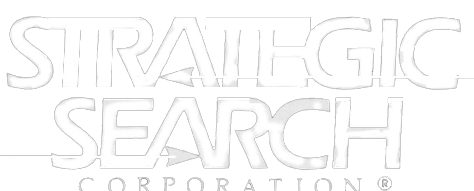
Engineering job recruiting has slowed significantly as a result of the coronavirus pandemic. Just two months ago engineers enjoyed an unemployment rate of near zero! Engineers are still being hired as engineering job recruiting continues at a much slower pace.
Most engineering operations are stay-at-home right now. Since engineers are at the forefront of gains in productivity, companies are seeking to extract the optimum yield from their engineers while they stay at home.
We’re In the Midst Of A Changing Environment
The current workforce climate is changing rapidly. Companies are grappling with a range of issues from supply chain bottlenecks to reduced consumer demand. Some areas like medical devices are witnessing a significant strain in manufacturing capacity versus demand.
The shift to an almost completely remote workforce is one of the most jarring adjustments. This is particularly evident in the engineering, research and development (R&D), scientific, information technology (IT), technical and manufacturing fields Strategic Search Corporation specializes in recruiting for.
This is especially true in situations where engineers often need sophisticated computer based tools to accomplish major R&D breakthroughs. Those engineers need such tools as Computer Aided Design (CAD), Computer Aided Manufacturing (CAM) and Computer Aided Engineering (CAE) to perform at peak levels.
Some companies are scrambling to support remote teams without losing momentum. This is a challenge in and of itself. And it is particularly true for engineers who need to stay aligned throughout the product development process.
How do companies quickly adapt to this new reality without jeopardizing quality, efficiency or development timelines?
How do companies acclimate new engineers who were part of their recent engineering job recruiting wave before the COPID-19 hit?
Project management platform developer Wrike recently surveyed US workers. Nearly half of those employees said they don’t believe they can do their jobs as effectively while working from home. The percentage was closer to 80% for engineers who responded.
Three Tips for Increased Productivity for Stay at Home Engineers
The obstacles that come with remote engineering work are not insignificant. This is particularly true with engineers who joined their companies recently as a result of their company’s latest engineering job recruiting efforts. However, there are several best practices that can ensure engineers are equipped for success.
1.) Utilize Multi-Faceted Collaboration to Go Beyond the Basics
It’s important that we over communicate when channels of connection are limited in the virtual world. But we must do so with focused intent.
Communication among teams and stakeholders needs to go beyond collaboration basics in order to successfully define and design products.
It’s about more than just a conversation or simple text edit. Instead, communication must be structured so that it focuses on the product(s) being built.
It should include context to inform the conversations and decisions that are being made.
Communication must provide broad visibility into the development process so that change can be managed by each person responsibly.
In-person meetings and face-to-face water cooler chats in the hallway no longer occur in this new remote work dynamic. Those meetings used to lead to decision making that would impact an entire team and the product development process itself.
True, tools like Zoom, Slack and shared documents contribute an important element in the remote work environment. However, the communication demands for virtual engineering teams building complex products are more complicated and demanding.
Teams that work with structured, live data need to be able to define, review and validate the data at any time. This will ensure correct information is passed to the right team at the right time.
Critical functionality of the product they’re working on literally depends on it.
2.) Collaborate with a Purpose
There is a great deal of complexity in the modern product development process within the engineering environment. As such, strategic team collaboration offers one of the best ways to address some of the many obstacles encountered within that arena.
Teams need to establish a common definition of success from the get go.
They must focus entirely on what they are building and not waste any time accomplishing that task.
It’s best to clarify expectations upfront regardless of whether your team is fully remote and running into roadblocks or just starting to make the shift.
For instance, what do the terms “define,” “build” and “test” mean for your team?
What does success look like based on feedback loops such as customer interviews and design reviews?
Every person within the group can make better decisions if you define the “why” at the very beginning of any project. This ensures roles and responsibilities are clearly defined. Those involved are thus empowered to initiate and resolve any issues that may arise.
Moreover, once aligned, don’t allow decisions outside of the collaboration processes that’s already been established.
For instance, say Slack, Jira and a requirements, risk and test management platform are your primary forms of communication. Then do not deviate and go to shared documents or emails.
This deviation will often lead to confusion, mistakes and potential product design failures.
3.) Embrace Downtime
Most engineers undoubtedly want to keep designing, building and developing product. However, it’s perfectly okay to consider delaying the introduction of a product at the present time.
We’re in an incredibly unique scenario. Pausing now can ensure an even better workflow once we’re back in the office.
Perhaps production has slowed or halted entirely. Then consider working on your backlog and taking time to look for an opportunity to up-level your process and tooling.
This is much like being cooped up in the house. It allows us time to tackle projects previously placed on a back burner.
A moment of solace can open your teams up to new ideas on how to be more agile in the design process going forward.
It’s also fair to say consumers right now have little expectation for companies to deliver on new products anytime soon. Unless it’s deemed essential such as a medical device, video conferencing tools or high-demand services such as streaming entertainment.
There’s just too much happening in the world today to expect a product release date to be in the forefront of peoples’ minds. However, that doesn’t mean that production should stop completely.
Instead, teams can use this time to refocus their efforts on refining and aligning requirements and features that have yet to be built. This pause allows engineers to ideate, innovate and conceptualize around what will ensure this product is built correctly. This will enable them to meet the most up-to-date requirements the moment production picks up again.
The product and system development environment is already quite complex in a normal office setting. Transitioning to a fully remote workforce can be stressful and straining.
However, it offers engineers an opportunity to optimize their project management in ways we’ve never seen before. Companies and teams will rise up to be more agile, flexible and innovative than ever through this transformation.
Strategic Search Corporation Moved But Still Recruiting
Engineering job recruiting continues at Strategic Search Corporation. We are still receiving client orders for engineers, scientists, IT, R&D, technical and manufacturing talent. Contact us as your needs arise.
We are now located at 205 N. Michigan Avenue, Suite 810, Chicago, Illinois 60601. You can still reach us by phone at 312-944-4000. Our other contact information remains the same.



